Few cars represent American racing success on the world stage quite like the Ford GT40. Sure, that famous 1-2-3 finish at Le Mans in 1966 cemented the GT40’s place in our collective vehicular memory and kicked off a four-year run of dominance at the French circuit. But during their heyday, in the hands of factory and privateer racers alike, GT40s also scored victories around the globe – from Italy to Rhodesia, Canada to South Africa, Belgium to Brazil.
And while we won’t go so far as to say that the mighty sports racers also made for adequate grocery-getters, in accordance with period homologation rules that required production of at least 50 cars, some GT40s were built for street use. This car, chassis no. P/1069, is one such grocery getter.

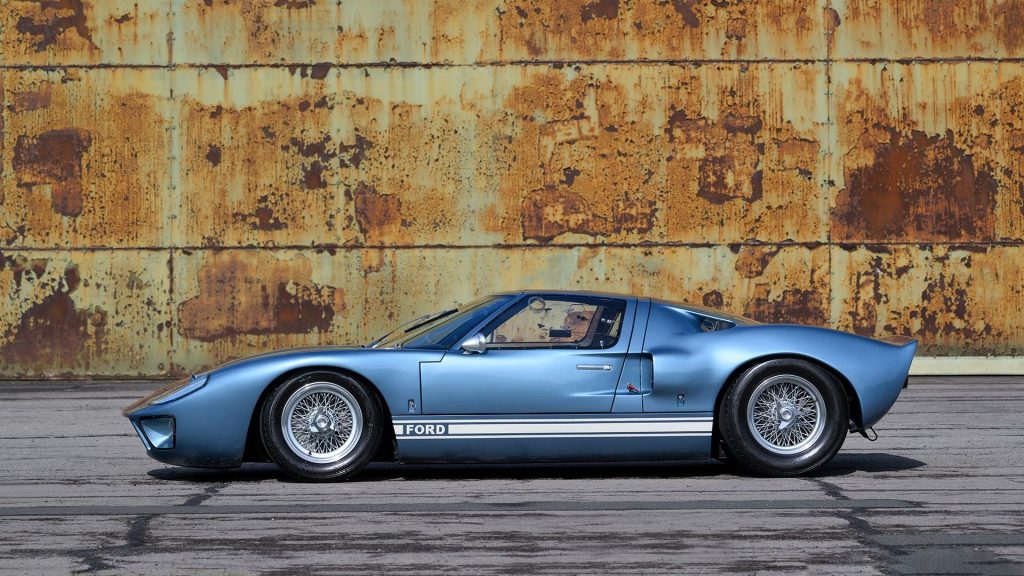
Total GT40 production, from Mk I to Mk IV variants, is estimated to be 105 examples. This includes 4.7- and 7-litre Mk I and Mk II cars, as well as the more radical racing Mk IV, or “J cars,” of which 12 were built. And it includes the seven Mk III cars, which were designed from the start for road use, with extra headlights, softer springs, a detuned V8, and extended rear bodywork to allow for cargo space, among other changes. The GT40 Mk I and Mk II, therefore, comprise the bulk of production, and that includes 31 Mk Is produced for the street. Few have a history as coloured – literally and figuratively – as P/1069, also known as “the Hostage Car.”
Built alongside its racing counterparts at Ford Advanced Vehicles in England, the car was completed in mid-February 1967. Finished in Opalescent Silver Blue, it rode on Borrani wire wheels and was powered by a small-block 4.7-litre “Hi-Po” V8, breathing through four Weber carburetors and mated to a five-speed ZF transaxle. It was one of 20 Mk I GT40s earmarked for Ford’s Promotion and Disposal Programme – a press loaner, essentially – and was originally one of six Mk Is slated to go to Shelby American for use among the firm’s field managers. That never happened. In fact, this car wouldn’t reach our shores for decades.
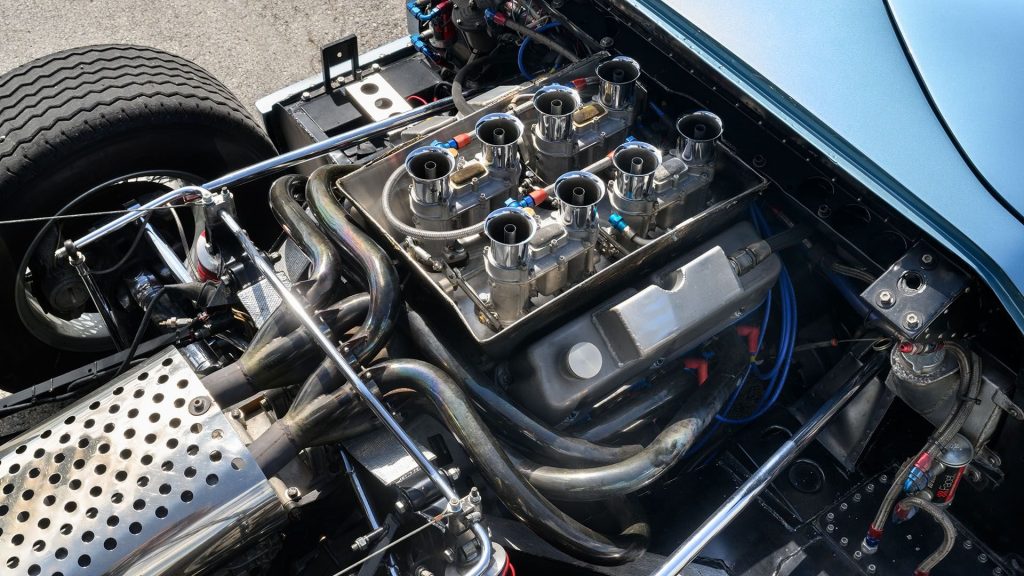
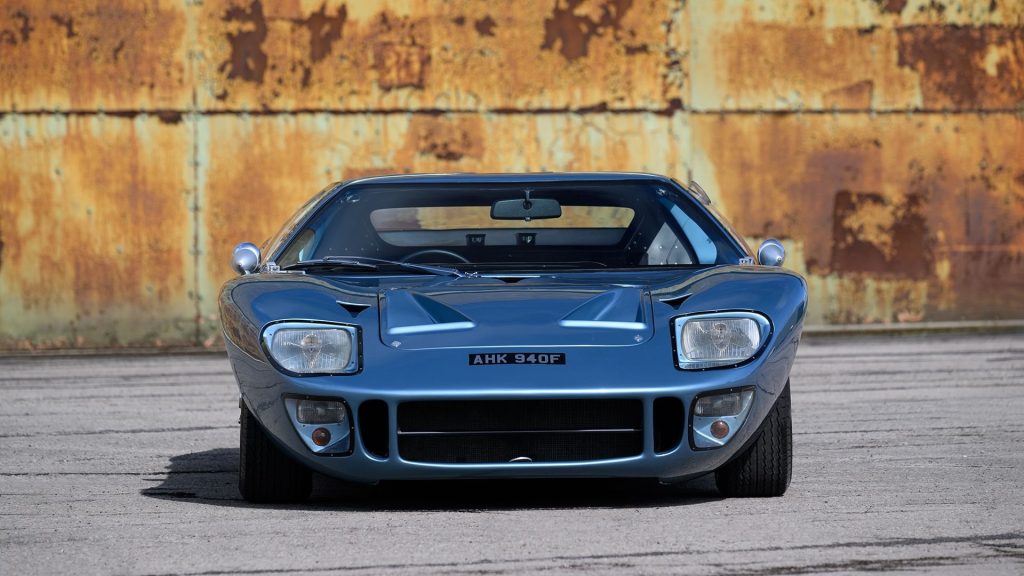
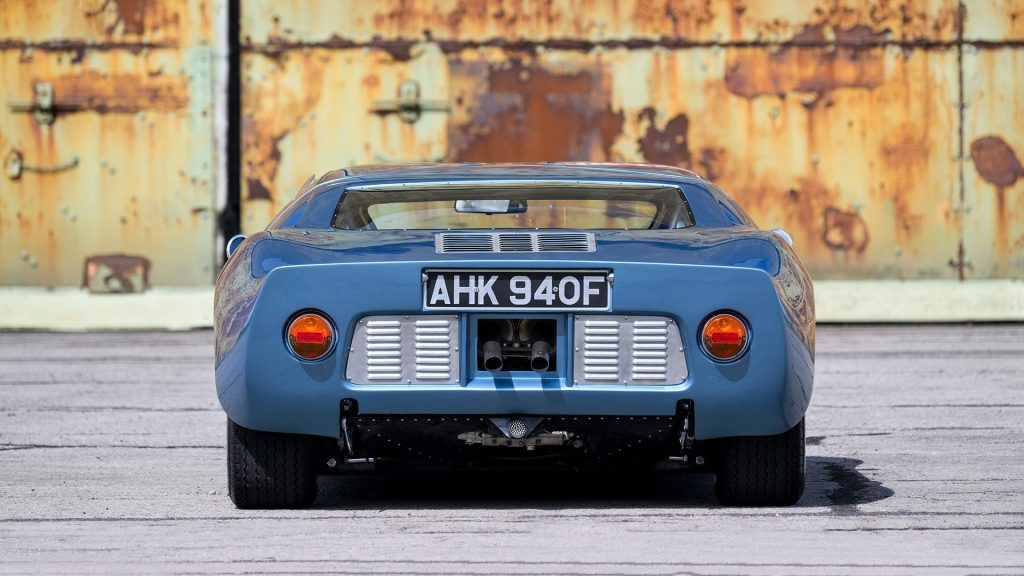
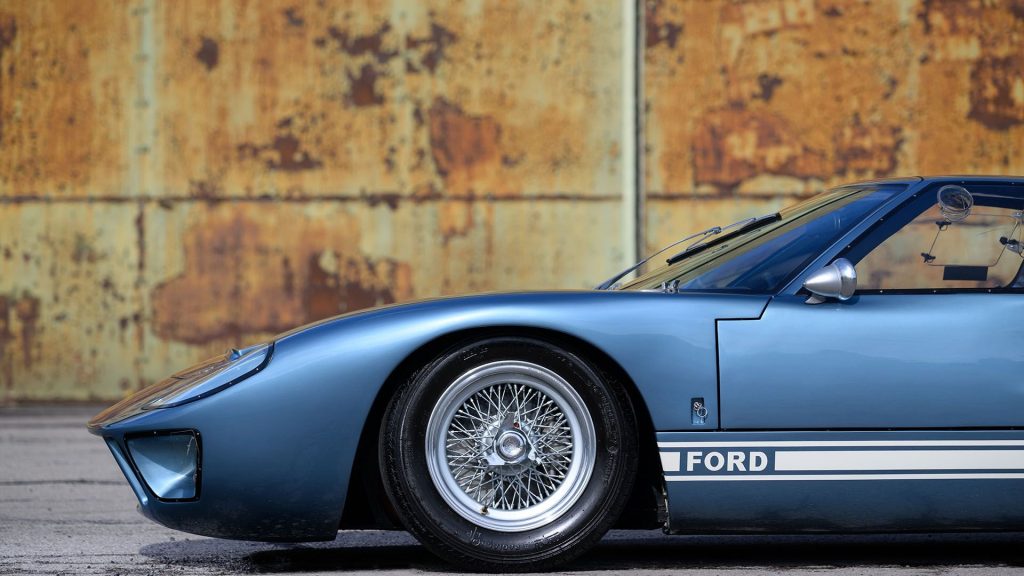
Instead, the car went to Switzerland, as a loaner for the dealership run by Georges Filipinetti, who, in addition running the Scuderia Filipinetti racing outfit (with which he campaigned a GT40 and a Cobra Daytona coupe at Le Mans in 1965) had become the official Swiss distributor for Ford Performance. Filipinetti had P/1069’s colour changed to Metallic Borneo Green and displayed it that March at the Geneva Motor Show. Then, it seems, he just kind of kept it for the rest of the year, despite increasing protestations from fellow racing principal John Wyer, who understandably wanted the car for his own promotional purposes. This minor feud earned the car its captive nickname.
Back in England by early 1968, P/1069 got road registered as AHK 940F, the designation it still wears today. The car made the rounds, serving as a tester for various motoring journalists, including Denis Jenkinson, who in Motor reported the car’s ZF five-speed to be at the top of his list of “desirable gearboxes,” but only after proclaiming to a friend who’d asked about parking it in London: “I wouldn’t want to take it to London, let alone park it there.” Jenks, you see, had the car for “motoring with a capital ‘M’ not for parking.” He had the right idea.
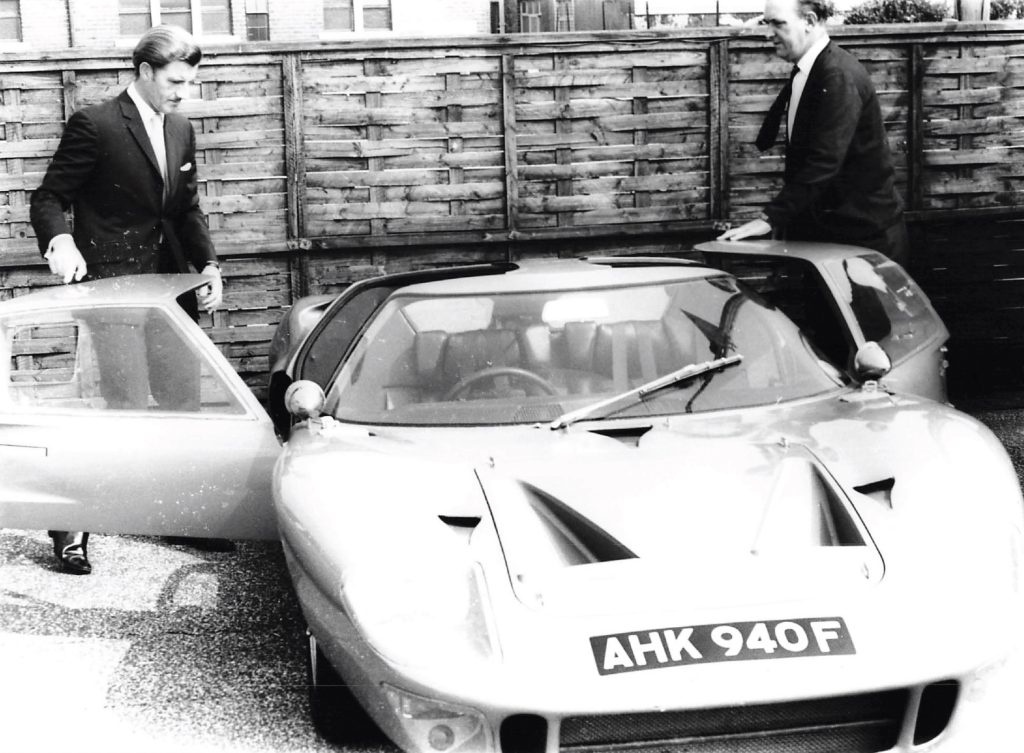
It was back on the Geneva show stand in ’69, before British businessman and fine motorcar aficionado Anthony Bamford purchased it and had it colour-changed again, this time to yellow. The car changed hands at least five times over the next three years, and was painted yet again, this time dark green. At some point in 1972, it suffered fire damage at the hands of its newest owner, the result of an errantly fitted fuel cap as he drove it home for the first time. The subsequent owner had the car restored, which included another colour change, back to yellow.
It finally made its way to the States in 1999, and into the hands of Connecticut collector Barney Hallingby, until he traded P/1069, along with a Cobra, a Ferrari 330 GTS and 275 GTB, plus some cash, for an Aston Martin DB4 GT Zagato. Quite the transaction, that.
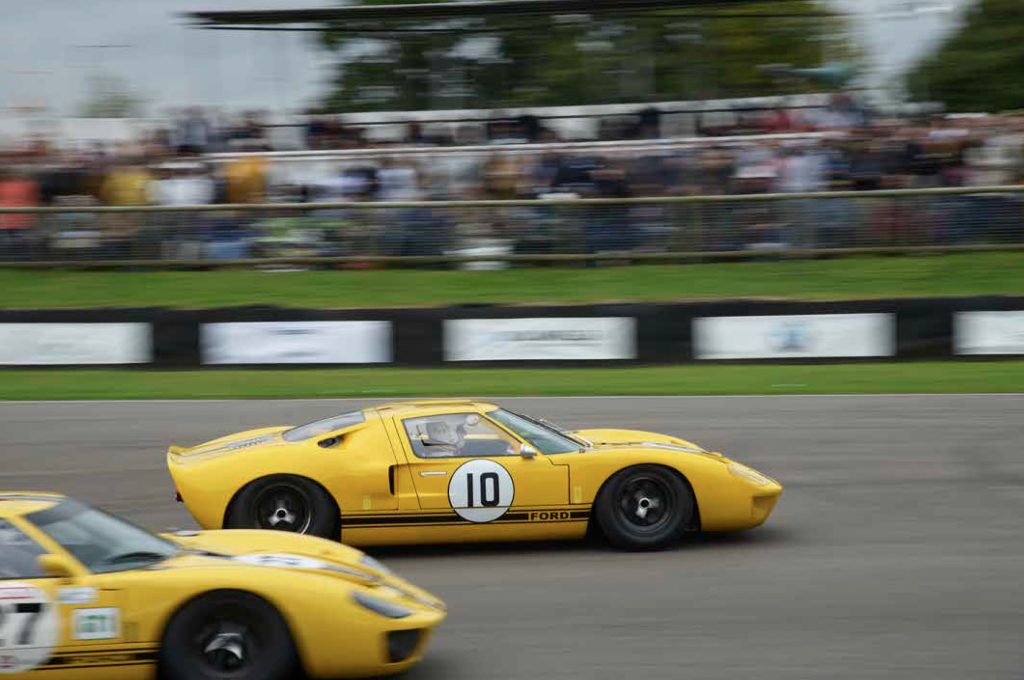
Back to Europe it went, back through a series of hands, until this street GT40 was given a proper retirement racing in vintage events throughout the 2000s and 2010s, including the Goodwood Revival in 2012 and ’13. Under its current ownership, GT40 P/1069 is once again painted Opalescent Silver Blue. And at the 2024 Amelia Island auctions in Florida, it is once again for sale.
Eighteen separate owners over the years is no small feat, but perhaps that is the fate of a street car you don’t want to park. How this one will fare when it hits the auction block in Amelia Island in early March is anyone’s guess, although its full documentation from new, and the colourful history it all encapsulates, is sure to boost its appeal. With so few street-going Mk I GT40s produced, ownership opportunities don’t arise often, although, curiously, Mecum just sold a 1966 Mk I in January for £5.5M, including fees. If P/1069 sells within its presale estimate of £3.2M–£4M, you might even call it a bargain.













